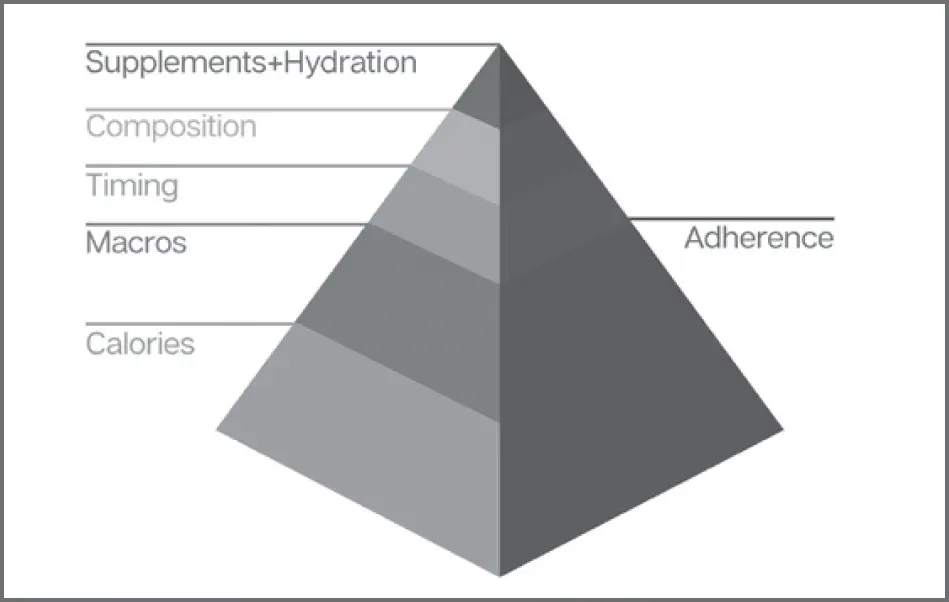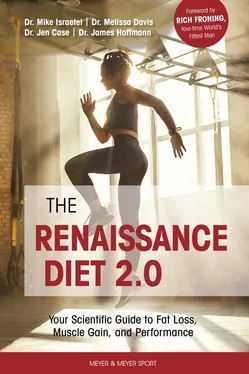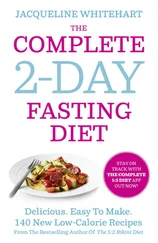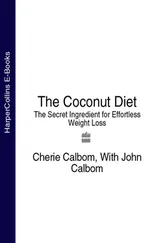We sincerely hope you enjoy this book and will put the knowledge you gain from it to use in reaching your health and fitness goals.
Dr. Mike Israetel
Dr. Melissa Davis
Dr. Jen Case
Dr. James Hoffmann
PART I
NUTRITION PRINCIPLES AND PRIORITIES
There are countless diet options available these days. If you would like some evidence to back this statement, try looking up “fat loss diet.” New diets that promise to help you lose fat, build muscle, and increase performance pop up online nearly every day. Some diets eliminate entire food groups while others focus on consuming solely those same food groups. In reality, the science of dieting has moved beyond the scope of just controlling food groups; you have likely heard of concepts such as macronutrients, total calorie intake, and meal timing. The scientific basis and reasoning behind the various available dietary regimens are not often made entirely clear. With so many opposing options, just deciding how to diet can be a frustrating and seemingly hopeless endeavor.
The good news is that there are five main principles, along with adherence to those principles, that contribute to any diet’s effectiveness. Differences in implementing these principles account for all variations between diets and their outcomes. We can get lost in the superficial aspects of the many diet options available. One diet may require you to eliminate carbohydrates from your meals, whereas another calls for fasting. The intended outcome of each of these is generally weight loss. What might jump out at you is the lack of carbs or the fasting periods, but these are just superficial aspects–both these diet alterations are meant to achieve one goal: a calorie deficit. It is the calorie deficit that results in the weight loss, not the lack of carbs or meal timing.
Calorie balance is the first and most important of the diet principles, and any diet that works well will manipulate calories directly or indirectly. The other four diet principles can also alter superficial aspects of a diet. Once you have learned to see past these superficial aspects and identify each of the five underlying diet principles, you will be able to assess their roles and predict that diet’s effectiveness.
Diets vary quantitatively across one or more of the following five principles:
1.Calorie Balance:How many calories you eat per day relative to how many you burn.
2.Macronutrient Amounts:How many grams of protein, carbohydrate, and fat you eat per day.
3.Nutrient Timing:When and how you spread your total food intake across daily meals.
4.Food Composition:The sources of macronutrients you consume.
5.Supplement Use and Hydration:How much and what type (if any) dietary supplements you consume and your level of hydration.
All these factors contribute to rates of weight loss or weight gain as well as differences in athletic performance. As we will learn, some of these principles are more powerful than others in determining outcome.
Although adherence is not a programmed aspect of a diet, it is critical. If the diet were a race car, adherence would be the driver; without a driver, the car does not race. A good driver can get the best possible performance with any given machine, but a bad driver can crash even the best car. Simply put, you cannot succeed on a diet you do not follow, regardless of how good the diet is.
When we wrote the first edition of this book some years ago, we took an extensive look at the research on dieting for fitness. We assessed effect sizes, which are measurements of how much change in outcome is observed when a specific variable differs between groups. Studies that varied calorie balance alone showed the most significant effects; studies that manipulated macronutrient intake (without altering calories) showed smaller but still significant differences in body composition changes. Altering nutrient timing (without changes to calories or macronutrients) resulted in very small differences in outcome. The effect of changes in food composition or supplement use on fitness outcomes was undetectable in most cases. As a testament to the fact that adherence to any diet is a prerequisite for its success, metabolic ward studies, in which subjects do not leave the research facility and can only eat the food administered by researchers, are the gold standard in nutrition research because of the near perfect adherence that results from these conditions.
We qualitatively consolidated data from these investigations and came up with estimated relative effect sizes for the five principles of dieting:
Calorie Balance:approximately 50%
Macronutrient Amounts:approximately 30%
Nutrient Timing:approximately 10%
Food Composition:approximately 5%
Supplements and Hydration:approximately 5%
Again, these percentages only apply to the extent that an individual adheres to a given diet. A perfectly planned calorie balance, for example, will not have the desired effect if the dieter is not eating those planned calories.

Figure 1.1 The Diet Priority Pyramid depicts the relative importance of the diet priorities for body composition and performance outcomes .
If you run a diet based only on calorie balance, you might expect to get about 50% of the potential effect of the diet on body composition and performance. On the other hand, if you based your diet on both calorie balance and proper macronutrient intake, you could get about 80% of the diet’s potential results. If you took all the right supplements and ate only healthy food options, but did not worry about macronutrients, timing, or calories, you could not expect more than about 10% of the potential positive outcomes from the diet. We want to make it clear that this analysis is for body composition change and performance outcomes, not health . While paying attention to food composition (eating healthy foods most of the time) does not have a huge effect on appearance or performance, it does have a significant effect on health, as detailed in our book Understanding Healthy Eating .
AVOIDING PITFALLS AND USING THE DIET PRINCIPLES TO YOUR ADVANTAGE
The differential effects of diet principles provide useful guidelines for programming diets with specific outcomes in mind. Prioritizing the less powerful aspects (such as meal timing and supplements) and taking the powerful principles (such as calorie balance and macronutrient intake) for granted are common mistakes. Someone might eat with exact meal timing and take creatine and whey protein supplements, but if calories and macronutrients vary too much day to day, there simply will not be substantial results. Thousands of people start new fat loss or muscle gain diets every week, and many of them choose diets that are not based on the higher priority diet principles and thus experience minimal results.
Perhaps the most commonly neglected dieting principle is calorie balance. Thousands of people restrict various food types to consume only specific foods–unknowingly prioritizing one of the less important diet principles, food composition. Supplements are the most overemphasized principle. People buy countless bottles of pills and powders and take them religiously, expecting big results. While investing so much time and energy into the minor priorities, many of these well-intentioned dieters do not have the willpower leftover to invest in the big priorities that really matter. In a fat loss phase this can mean eating too much (very healthy) food to create a calorie deficit. In a muscle gain phase this can mean eating exclusively healthy food that is high in fiber and not as appetizing, resulting in a failure to create a calorie surplus for weight gain. Both these failures often occur despite a diet with appropriate food composition, well-planned meal timing, and supplements.
Читать дальше













